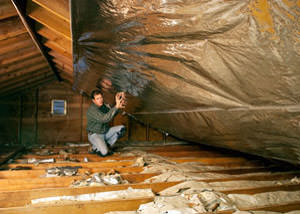
Unfortunately it appears that brains are not a requirement to publish a study, nor is pointing out that installing said materials in such a fashion is not only incorrect but would have happened if anything conductive touched said loose connectors. Lately a few people have stumbled upon a “ study” where some “insurance inspectors” applied current to a certain brand of radiant barrier & managed to create fire. The same principle applies, if the barrier is touching anything the heat will conduct straight through it.Īs for the Hmmm part – well that is a good example of what happens if the coating is missing, damaged, or gets dirty. Now in order to remember that a radiant barrier needs an air space to be effective just consider what would happen if you put your hand on said iron while it is on… Yeah, you would get burnt big time as the heat no longer is being radiated out but conducting straight through. If we were to turn the iron off & place a candle in front of it then we would be able check out the reflectance or how much heat is being absorbed instead of reflected back at the source. The Low-ɛ side is only radiating or emitting at 130° whereas the high- ɛ side is radiating out a much higher temperature. For example this iron pictured below shows how this principle works. Emissivity (ɛ) on the other hand deals with how much heat the barrier allows to radiate out. Reflectivity is probably the easiest part of the barrier to understand as it simply refers to how much radiant heat it reflects away from it (remember radiant heat only applies to the transfer across air or a vacuum). A radiant barrier DOES NOT have an R-Value (though bubble faced styles may claim the air pocket as an R 1), nor does it improve another materials performance or R-Value though it can reduce the amount of heat said material has to deal with. In order to qualify as a Radiant Barrier it must have a reflectivity rating of.

A Radiant Barrier (RB) is a product designed to only block radiant heat transfer from happening and is rated based on its reflectivity & emissivity values per ASTM C 1313.


 0 kommentar(er)
0 kommentar(er)
